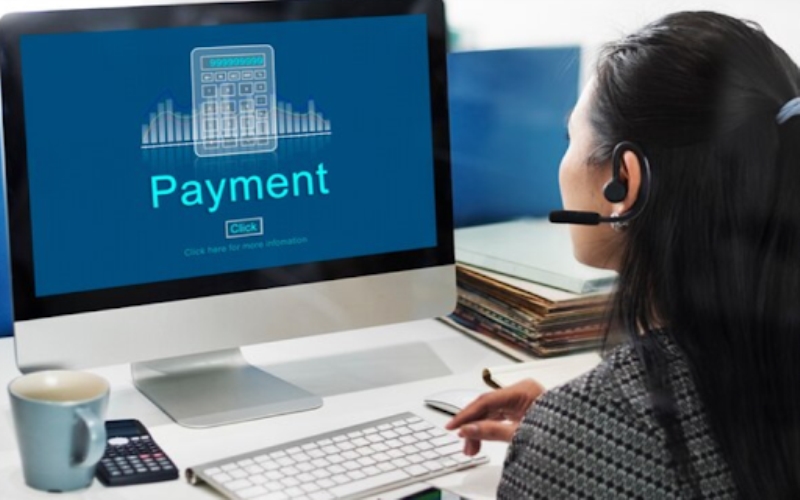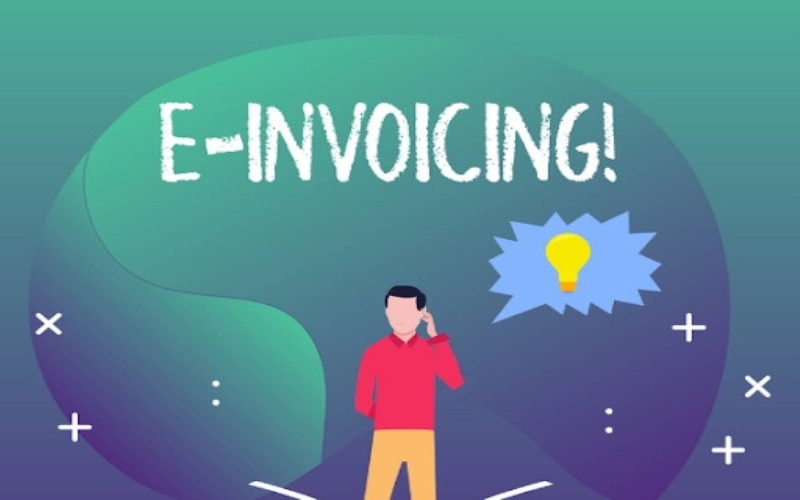E-invoicing is a concept that involves the electronic generation and exchange of invoices between businesses. This digital approach streamlines the process, reduces paperwork, enhances accuracy, and improves efficiency. E-invoicing software facilitates rapid transactions, ensures secure billing, speeds up payment processes, and promotes sustainability by reducing paper waste.
An effective billing process is crucial for any business. It fosters positive financial health, ensuring consistent cash flow. Not only does it minimize delays or errors, but also enhances customer relations, by providing transparency and credibility. Additionally, it allows for streamlining operations and tracking revenue with ease.
Understanding the billing process
Understanding the billing process is crucial for every business transaction. It involves issuing invoices for services rendered or products sold. Businesses need to understand each step, from calculating the amounts and preparing invoices, to tracking payments, to ensure financial accuracy and proper customer service.
Traditional paper-based invoicing is a conventional method of billing involving physical documents. This system involves creating, printing, and mailing invoices, leading to increased time consumption and higher costs. While practical, its efficiency pales in comparison to modern digital invoicing systems.
Traditional invoicing involves many challenges such as heavy paperwork, high risk of human errors, and long processing times. It can also lead to delayed payments due to missing or lost invoices. The lack of data security and inconsistency in invoice formats further complicate the process.
Introduction to E-Invoicing Software
E-invoicing software refers to a type of application that automatically generates bills for services rendered or products sold. This digital solution is designed to streamline, automate, and manage billing and payment processes efficiently, reducing the need for paper-based, manual invoice generation. It ultimately enhances accuracy, and productivity, and speeds up payment cycles. Far more than just digital versions of paper invoices, e-invoicing software often integrates with a business’s accounting system, making it easier to track transactions, maintain records, and ensure financial compliance.
E-invoicing software is a digital tool which automates invoice processing tasks in businesses. It generates, sends, and tracks invoices electronically, thereby enhancing efficiency and reducing paper use. It allows for swift transactions, easy record-keeping, cost-cutting, and improved financial management.
E-invoicing software digitally creates and sends invoices to clients, streamlining the billing process. It automatically outlines charges for products or services provided, calculates total costs, integrates with business accounting systems, and allows online payments. It improves efficiency, and accuracy, and reduces paper waste, offering a modern, technology-driven solution for businesses.
The Transformation Potential of E-Invoicing Software
Efficiency and accuracy in the billing process contribute to the improved financial health of a business. Efficient billing processes reduce time and resources spent, leading to higher productivity. Meanwhile, accurate billing prevents revenue loss that occurs due to errors, enhancing financial stability.
Cost-effectiveness is an important factor considered in business operations. It refers to the evaluation of the efficiency and economic viability of a project, product, or service regarding the benefits it offers compared to its cost. The aim is to achieve the maximum possible benefit at the least possible expense.
The impact on cash flow and revenue cycle can greatly affect a business’s operations. A consistent cash flow ensures the smooth execution of daily expenditures and investments. The revenue cycle, tracing the process of earning revenue, is pivotal for strategizing business growth. Irregularities in these areas can lead to financial instability.
Features of top-tier E-Invoicing Software
Top-tier E-Invoicing software typically has features like invoice generation and customization, automatic reminders for unpaid invoices, and real-time updates on invoice status. It offers multiple payment gateways, integration with accounting software, robust data security, and comprehensive reporting capabilities for effortless financial management.
Integration capability refers to the ability of a system, software, or process to seamlessly adapt, connect, and work with other systems or technologies. It is essential in today’s technologically advanced world, enabling enhanced communication, collaboration, and efficiencies across disparate platforms and systems.
Security features are essential elements in modern technology that protect systems from harm. These include antivirus software, firewalls, encryption for data protection, two-factor authentication, biometrics like fingerprints or facial recognition, and real-time alerts for any suspicious activity. These features maintain privacy and prevent unauthorized access.
Automation and customization are crucial for business efficiency. Automation simplifies tasks, reducing human error and increasing productivity. Customization, on the other hand, aims to cater to individual needs and preferences, enhancing customer satisfaction. These two elements combine to significantly improve business processes and customer experiences.
Mobile access refers to the ability to use digital devices like smartphones, tablets, laptops etc., for connecting to networks from remote locations. It enables individuals to conveniently access information, carry out transactions, and communicate without being tied down to a specific location.
Top-tier E-Invoicing Software in the Market
Top-tier e-invoicing software revolutionizes billing procedures. They streamline payment processing, tracking, and management. Market leaders include FreshBooks, Zoho Invoice, and QuickBooks, recognized for user-friendly interfaces, robust features, and seamless integrations. They automate invoicing, ensuring accuracy, saving time, and enhancing business efficiency.
Microsoft Word is a versatile document creation software that offers features like spell check, formatting, and collaborative editing. Excel is a spreadsheet program for data organization and calculation. PowerPoint provides a platform for creating eye-catching presentations. Lastly, Outlook is an all-in-one email and calendar management tool.
Each software has unique features that offer specific benefits to users. For example, Photoshop provides multi-layered editing tools for graphic design, enhancing creativity. Excel, on another hand, offers impressive data calculation and analysis benefits. Salesforce outshines its CRM solutions, improving customer relationships and business productivity.

Conclusion
The advent of E-Invoicing Software marks a transformative shift in the way businesses handle their billing processes. This digital approach, emphasizing electronic generation and exchange of invoices, not only streamlines operations but also brings forth a myriad of benefits, including reduced paperwork, enhanced accuracy, improved efficiency, secure billing, accelerated payment processes, and a commitment to sustainability by reducing paper waste.
An effective billing process is undeniably pivotal for any business, ensuring positive financial health and consistent cash flow. Beyond minimizing delays and errors, a streamlined billing process fosters transparency and credibility, ultimately enhancing customer relations. Moreover, it allows businesses to streamline their operations and track revenue with ease.
Understanding the billing process is fundamental for businesses to navigate each step accurately, from invoice calculation to payment tracking. Traditional paper-based invoicing, while practical, has limitations in terms of efficiency and cost-effectiveness. The introduction of E-Invoicing Software presents a modern, digital alternative that addresses these challenges, offering streamlined, automated, and efficient billing and payment processes.





